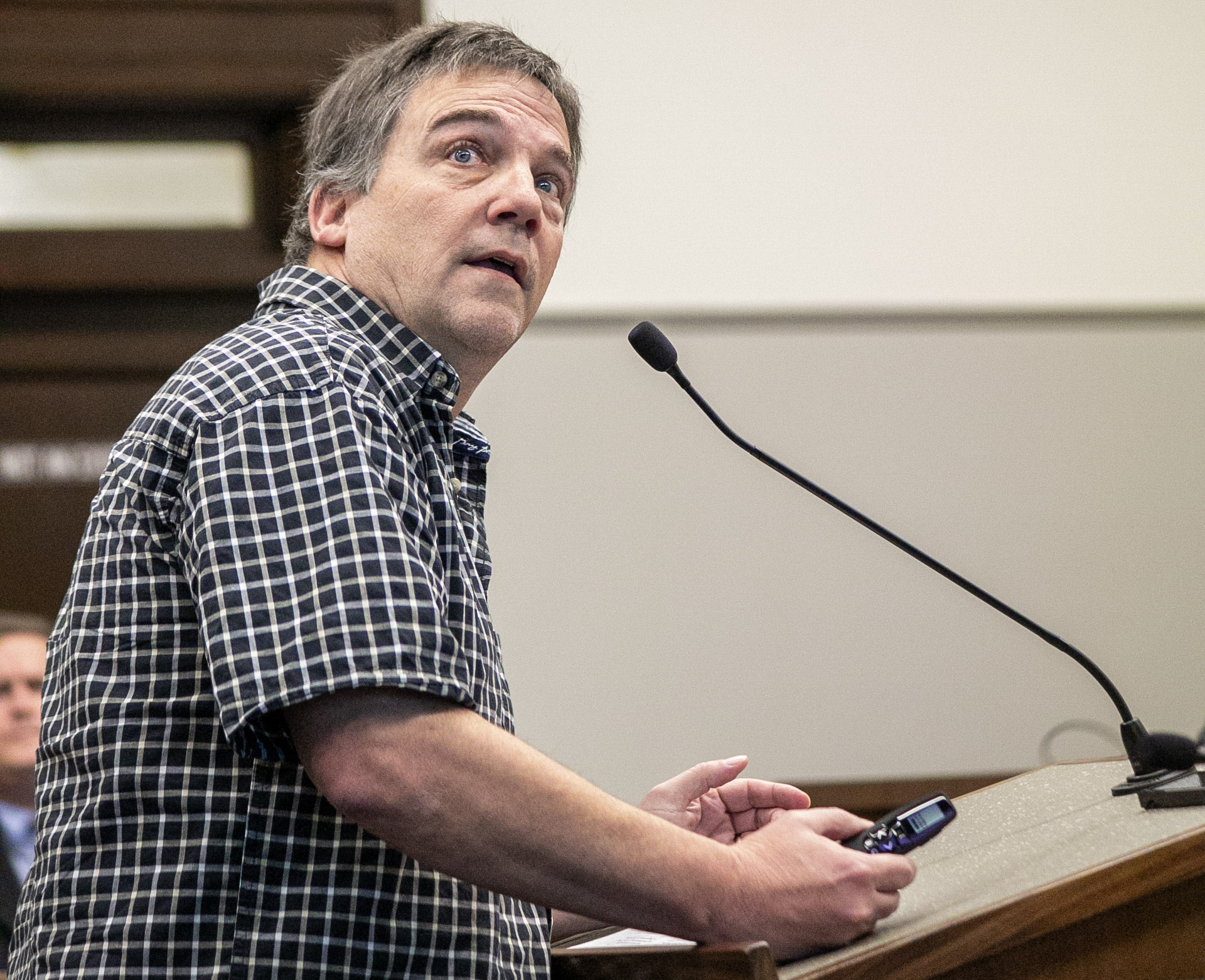Prior to taking his show before the Santa Barbara City Council this week, Jeff Shaffer explained the secret to getting homeless people off the street. “It’s not the first time that does it,” he said. “It’s the 14th.” Such persistence, he said, is essential to establishing trust, and trust is essential to getting people to accept help they may not think they need.
For the past 15 years, Shaffer has been dealing with homelessness one way or the other. His latest organization, SB ACT (Santa Barbara Alliance for Community Transformation), is a nonprofit dedicated to fomenting better collaboration among nonprofits, government agencies, business organizations, and homeless people themselves.
Last year, City Hall invested $100,000 in SB ACT; the Santa Barbara Foundation tossed in another $100,000. Shaffer showed up at City Hall this Tuesday to explain what he and SB ACT’s Rick Sanders and Barbara Andersen had been doing with that money for the last three months. What the council heard was a lot of big-picture talk and a description of some very focused outreach.
Shaffer detailed, for instance, how blue-shirted outreach workers with CityNet — a faith-based organization out of Orange County — teamed up with red-shirted “Ambassadors” hired by City Hall’s Public Works Department to focus on the 400 and 500 blocks of State Street. Of the 120 homeless people known to make State Street their home, he said, about 41 can be found on those two blocks.
These individuals tend to come in contact with law enforcement and medical-care providers with great frequency. By contacting these individuals “five, six, seven, eight times a week,” Shaffer said, 17 agreed to become clients of CityNet, which enters clients’ info into a unified computer program that allows the multiple agencies dealing with them to share notes as to who is doing what. Of the 17 clients, nine have made “street exits,” he said, meaning six have found permanent housing and three have found temporary accommodations. While such numbers may seem small, they’re dramatic enough in the homeless outreach world to inspire the expansion of such efforts to the 600 and 700 blocks of State Street.
The ultimate goal, Shaffer stated, was the development of more shelter beds and more affordable housing units. Getting there, he said, requires political will, finesse, and some serious listening. In the past few months, he stated, SB ACT has conducted 23 interviews with major players in the community. They’ve convened a steering committee representing 18 different organizations. They’ve devised flow charts and come up with a new language of social service jargon.
But mostly, he said, the focus will be on education and listening campaigns targeting the city’s six districts so that each district does its fair share and isn’t overburdened. The aim is to short-circuit the sort of angry neighborhood revolts against proposed homeless housing developments that occurred the past year involving Alisos Street and a parking lot by Carrillo and Castillo streets. In both instances, the proposals were sprung suddenly upon the neighbors, whose reaction was volatile.
Shaffer described some of the language that erupted in response to a more recent proposal slated for Hollister Avenue. One side described the targeted homeless population as “the worst of the worst.” The other side dismissed concerned neighbors as “NIMBYs.” Such language, Shaffer cautioned, does not help. More constructive, he said, was an initiative launched by Westmont to interview 30 residents living near Milpas Street on the city’s Eastside to find out how they’ve been affected by homelessness. The goal was not to pitch any specific solutions, just to listen.
The good news is there’s new state money to deal with homelessness. The county received $9 million last year and is slated to get another $4 million this year. Local governments found themselves competing among one another for the first grant; the second was structured to place a premium on cooperation.
Shaffer and his colleagues got a warm reception from the mayor and councilmembers. Councilmember Michael Jordan joked that Shaffer’s presentation sounded like “the fourth 10-year plan I’ve heard in the last 30 years.” More seriously, he said City Hall could have done a much better job inserting itself to reduce some of the neighborhood backlash that erupted in response to previous housing proposals. “Sometimes, we’re our own worst enemy,” he said.




